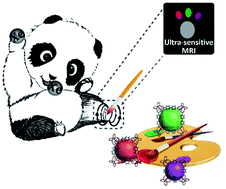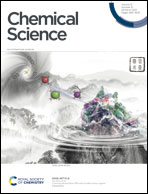Coloring ultrasensitive MRI with tunable metal–organic frameworks†
Abstract
As one of the most important imaging modalities, magnetic resonance imaging (MRI) still faces relatively low sensitivity to monitor low-abundance molecules. A newly developed technology, hyperpolarized 129Xe magnetic resonance imaging (MRI), can boost the signal sensitivity to over 10 000-fold compared with that under conventional MRI conditions, and this technique is referred to as ultrasensitive MRI. However, there are few methods to visualize complex mixtures in this field due to the difficulty in achieving favorable “cages” to capture the signal source, namely, 129Xe atoms. Here, we proposed metal–organic frameworks (MOFs) as tunable nanoporous hosts to provide suitable cavities for xenon. Due to the widely dispersed spectroscopic signals, 129Xe in different MOFs was easily visualized by assigning each chemical shift to a specific color. The results illustrated that the pore size determined the exchange rate, and the geometric structure and elemental composition influenced the local charge experienced by xenon. We confirmed that a complex mixture was first differentiated by specific colors in ultrasensitive MRI. The introduction of MOFs helps to overcome long-standing obstacles in ultrasensitive, multiplexed MRI.



 Please wait while we load your content...
Please wait while we load your content...